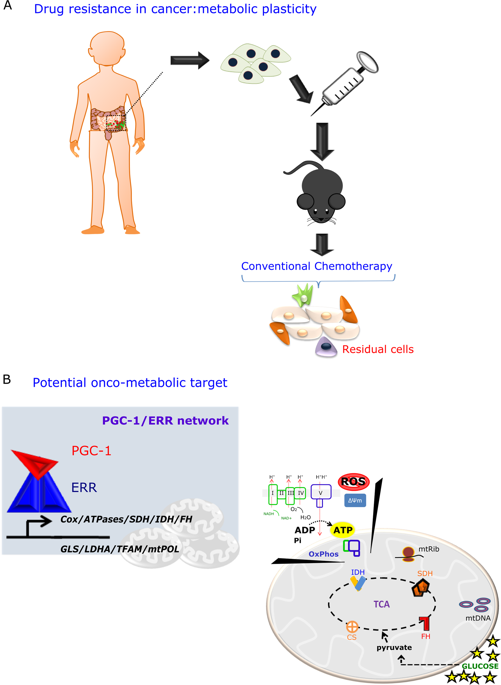npj Precision Oncology ( IF 6.8 ) Pub Date : 2019-03-21 , DOI: 10.1038/s41698-019-0081-6 Humberto De Vitto , Ann M. Bode , Zigang Dong

|
Transcriptional regulators include a superfamily of nuclear proteins referred to as co-activators and co-repressors, both of which are involved in controlling the functions of several nuclear receptors (NRs). The Nuclear Receptor Signaling Atlas (NURSA) has cataloged the composition of NRs, co-regulators, and ligands present in the human cell and their effort has been identified in more than 600 potential molecules. Given the importance of co-regulators in steroid, retinoid, and thyroid hormone signaling networks, hypothesizing that NRs/co-regulators are implicated in a wide range of pathologies are tempting. The co-activators known as peroxisome proliferator-activated receptor gamma co-activator 1 (PGC-1) and their key nuclear partner, the estrogen-related receptor (ERR), are emerging as pivotal transcriptional signatures that regulate an extremely broad repertoire of mitochondrial and metabolic genes, making them very attractive drug targets for cancer. Several studies have provided an increased understanding of the functional and structural biology of nuclear complexes. However, more comprehensive work is needed to create different avenues to explore the therapeutic potential of NRs/co-activators in precision oncology. Here, we discuss the emerging data associated with the structure, function, and molecular biology of the PGC-1/ERR network and address how the concepts evolving from these studies have deepened our understanding of how to develop more effective treatment strategies. We present an overview that underscores new biological insights into PGC-1/ERR to improve cancer outcomes against therapeutic resistance. Finally, we discuss the importance of exploiting new technologies such as single-particle cryo-electron microscopy (cryo-EM) to develop a high-resolution biological structure of PGC-1/ERR, focusing on novel drug discovery for precision oncology.
中文翻译:

PGC-1 / ERR网络及其在精密肿瘤学中的作用
转录调节因子包括核蛋白的超家族,称为共激活因子和共抑制因子,两者均参与控制几种核受体(NRs)的功能。核受体信号图谱(NURSA)已对人类细胞中存在的NR,共调节剂和配体的组成进行了分类,并已在600多种潜在分子中确定了它们的作用。鉴于类固醇,类视黄醇和甲状腺激素信号网络中辅助调节剂的重要性,假设NRs /辅助调节剂与多种病理因素有关,这一假设很诱人。称为过氧化物酶体增殖物激活受体γ辅助激活剂1(PGC-1)的辅助激活剂及其关键核伴侣,雌激素相关受体(ERR),作为关键的转录特征正在出现,这些特征调节着极其广泛的线粒体和代谢基因,使它们成为治疗癌症的极具吸引力的药物靶标。几项研究使人们对核复合物的功能和结构生物学有了更深入的了解。但是,需要更全面的工作来创造不同的途径,以探索NRs /共激活剂在精密肿瘤学中的治疗潜力。在这里,我们讨论了与PGC-1 / ERR网络的结构,功能和分子生物学相关的新兴数据,并探讨了这些研究中演变而来的概念如何加深了我们对如何制定更有效的治疗策略的理解。我们提出了一个概述,强调了对PGC-1 / ERR的新生物学见解,以改善针对治疗抗性的癌症结果。最后,我们讨论了开发诸如单粒子冷冻电子显微镜(cryo-EM)等新技术以开发PGC-1 / ERR的高分辨率生物学结构的重要性,重点是用于精确肿瘤学的新型药物发现。











































 京公网安备 11010802027423号
京公网安备 11010802027423号